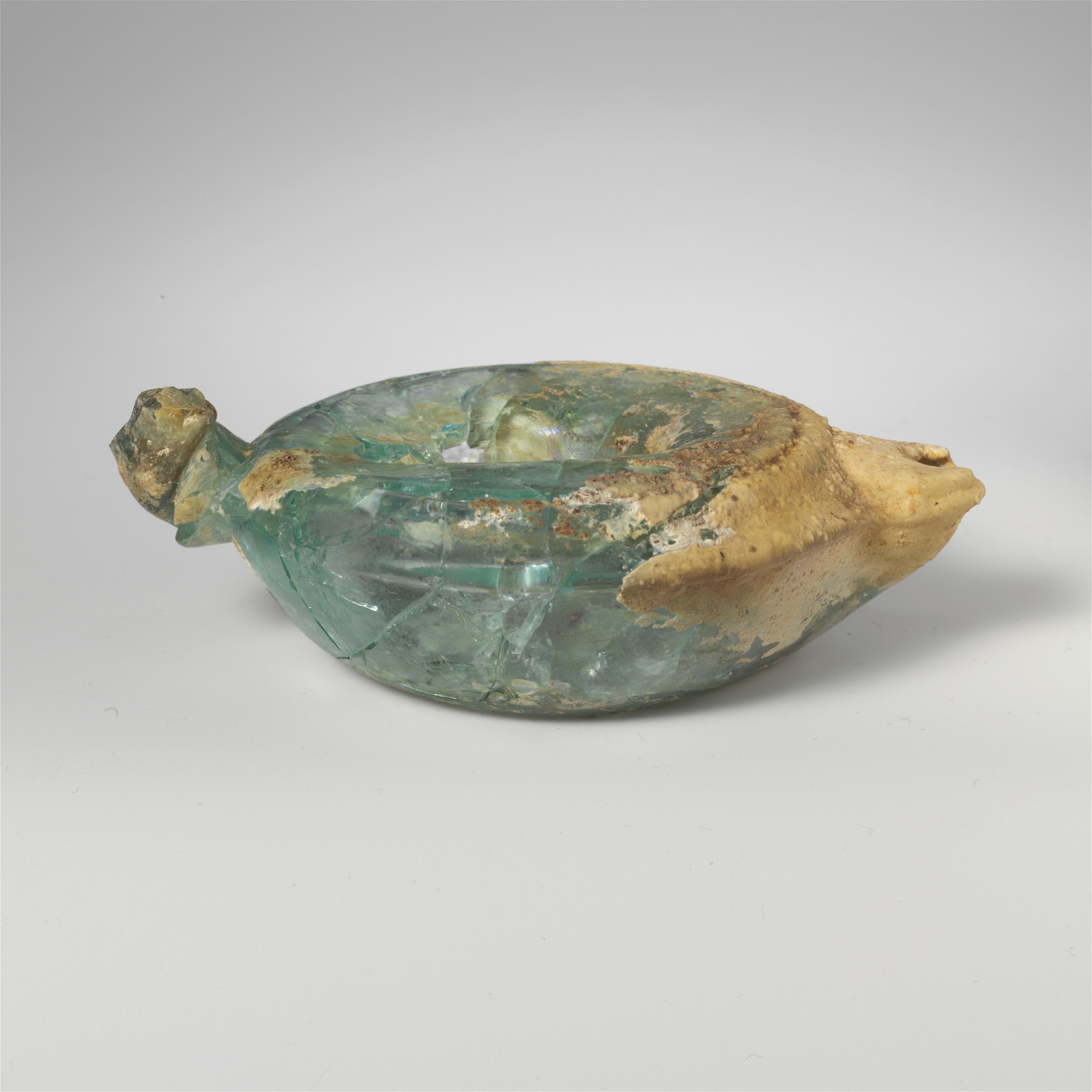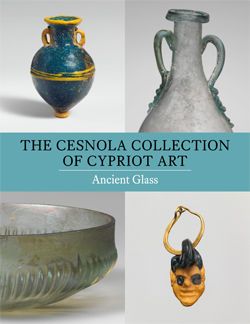Glass oil lamp
Translucent blue green; applied trail in same color.
Projecting oval nozzle with wick hole; circular body with sloping, slightly concave shoulder, separated from the discus by a single groove; plain discus, deeply pressed in at center; raised outer flange below shoulder, then sides curving in to rounded base with deeply pressed-in center; integral projecting oval boss at rear, opposite nozzle, to which a solid, thick trail has been applied to form a handle.
Broken and repaired, with part of discus missing and weathered breaks on nozzle and handle; many bubbles; slight dulling and iridescence, with patches of thick, yellow limy weathering, especially at front of body and on nozzle, and smaller areas of soil encrustation. No filler hole is visible but must have been located towards rear of discus behind the central point where the discus and bottom have been pressed together.
Most Roman oil lamps were made of terracotta or bronze. Glass examples are relatively rare; this one is particularly interesting because it copies the shape of mold-made terracotta lamps fairly closely—even down to the decoration on the nozzle.
This image cannot be enlarged, viewed at full screen, or downloaded.
This artwork is meant to be viewed from right to left. Scroll left to view more.




